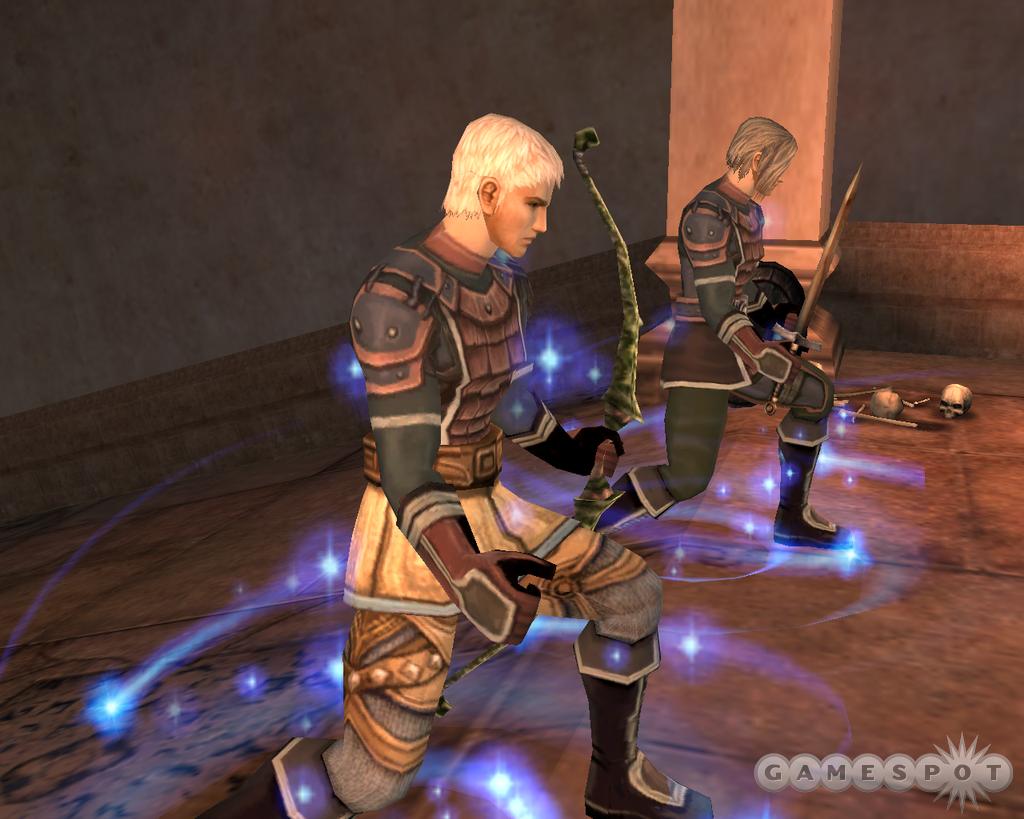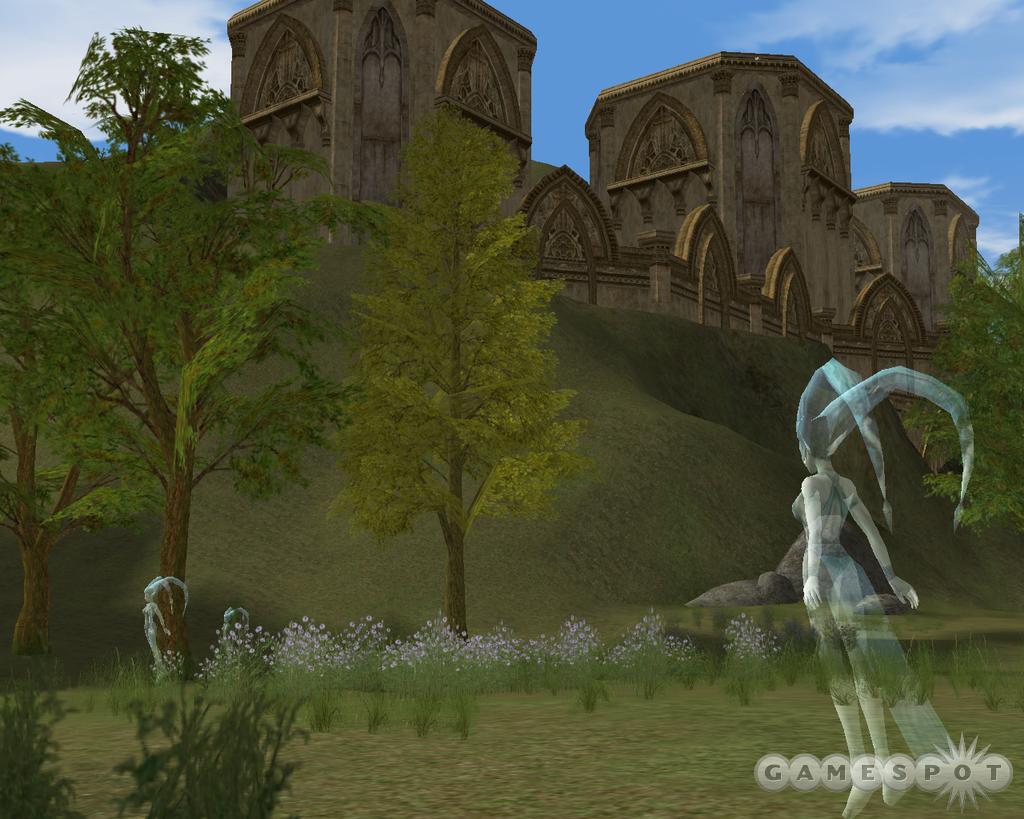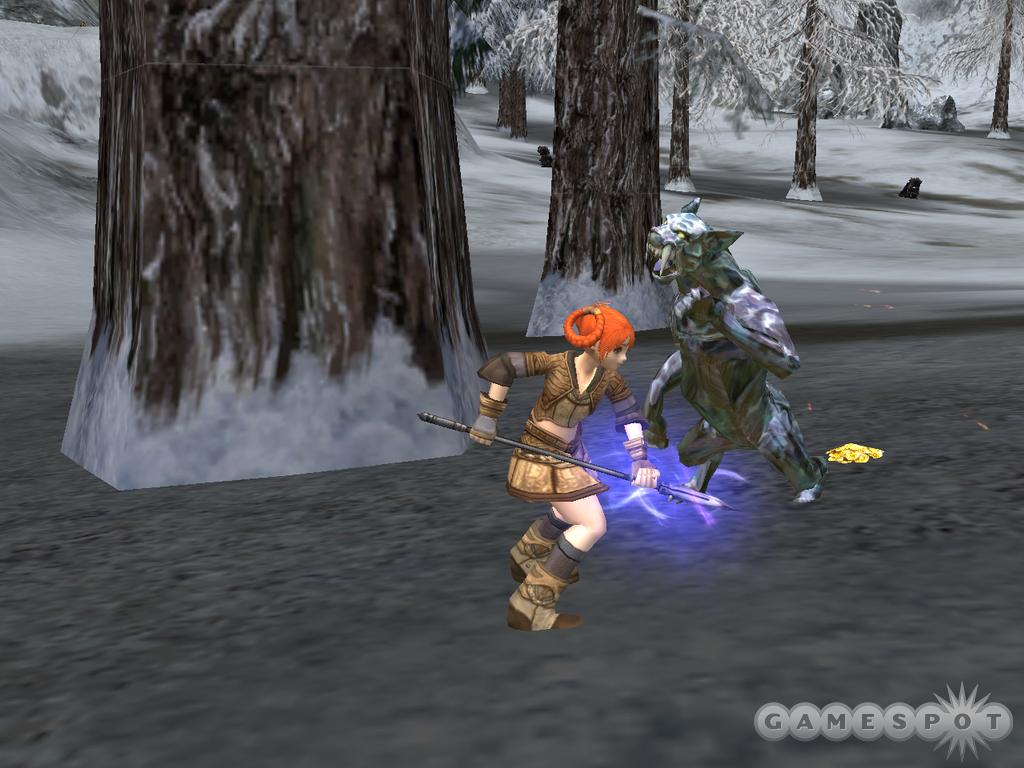Lineage II: The Chaotic Chronicle Impressions
Lineage II will let you go on adventures to battle powerful monsters, wage war against rival players, and even hitch a ride on a fire-breathing dragon. Get the details here.
Though it hasn't launched in North America, Lineage II is making quite a splash in South Korea. The sequel to the world's most popular online role-playing game (with more than a million subscribers) launched in South Korea in October, and it's been racking up impressive numbers ever since. As in most online role-playing games, in Lineage II you create a character to explore a vast virtual world that's populated by thousands of other players. You hunt monsters and battle other players in the never-ending quest for prestige and better equipment. But Lineage II differs from most online role-playing games because it incorporates an intriguing political and economic system that allows players to band together to rule the countryside. Aaron Rigby, the North American producer for Lineage II, visited the GameSpot offices recently and filled us in on how and why it is so important to capture castles in the game.

After you create a character in Lineage II using an incredibly simple and straightforward process, you can explore and play the game on your own. However, once you reach the 15th level, you'll discover that monsters can defeat you easily if they catch you alone. The same is true of other players. Lineage II currently has a free-form "player-versus-player" (PvP) combat system that lets anyone attack anyone else, at the cost of losing "karma," which is essentially your character's reputation. If you slaughter too many innocent players, you'll lose so much karma that your character will become a hated outlaw who will be attacked on sight by guards and who can be hunted down by other players to reduce their own karmic loads. This is why it's a good idea to join a clan, which is a long-standing player association (also known as a "guild" in other games). By becoming part of a clan, you not only join a group that you can adventure with but also join a group that can lay siege to castles and can control the local economy.
Castle sieges are two-hour-long battle royals that can occur between multiple groups of clans. The way it works is fairly simple. When a clan gains control of a castle, it has control of it for only two weeks. To control the castle longer, the clan has to schedule a siege. If the clan successfully defends against a siege, it gets the castle for another two weeks before it has to hold another siege.
While only one clan maintains control of the castle at a time, there are ways of enlisting other clans as allies for the defense of the castle. Since the clan that controls the castle decides tax rates and controls local vendors, this controlling clan can use its deep pockets to hire the aid of other clans with money and equipment. Likewise, a clan planning to attack the castle can attempt to garner support among other clans with promises of riches and loot. Whichever side your clan chooses, the game will make sure that you know when the siege begins, because sieges are major events in the game.

For a siege to be successful, the attackers must breach the castle's gates and must fight their ways into the inner keep, where the castle artifact is kept. The clan leader--and only the clan leader--can cast a spell on the artifact. If he manages to complete the spell without being interrupted, ownership of the castle changes hands instantly. However, the siege isn't over yet. The siege will reset, but in doing so, the new owners must defend the castle while the recently evicted owners must try to recapture it. If the evicted owners can breach the gates and get their clan leader to cast his spell on the castle artifact, they'll retake the castle, and the sides will switch places again. The ultimate winner is determined by whichever side possesses control of the castle at the end of the game's two-hour time limit. The winning clan then has two weeks of ownership of the castle before it has to hold a siege to determine whether it retains control.
As you might guess, these castle sieges are some of the highlights of the game. The siege system is already up and running on the Korean servers of Lineage II, and this version of the game has reportedly hosted siege battles of up to 300 players (who were battling it out for control of a single castle). Furthermore, massive battles with around 150 players on the screen simultaneously have been witnessed.
Castles and Dragons
Taking a castle isn't easy, nor is it supposed to be. First of all, there are the defending players to deal with--and they may choose to make a stand outside of the castle walls. The walls themselves are manned by nonplayer characters that rain down arrows on the besiegers. Then the outer gates must be knocked down by physical attack. Once inside the castle courtyard, the attackers have to deal with any defenders who might be inside the castle, and they must also bash down the inner gate. While the clan leader makes his way to the inner keep and to the castle artifact, other players can make attacks on the castle towers. If they can destroy a tower, it will neutralize the nonplayer characters that are raining arrows down from that section of the wall.

"You're going to die several times doing these sieges," Rigby told us. In fact, you can die several times during each obstacle. The attackers do get a break, though. Normally when you die, you respawn at the nearest town. But if this happened during a siege, by the time you made it back to the castle, the siege may very well have ended. So to make things a bit easier on the attackers, when a siege begins, the clan leader on offense can establish an encampment outside the castle. This encampment is something of a safe zone, so if you die during a castle siege, you'll respawn at the encampment rather than at the nearest town.
There are a number of reasons to control a castle that go beyond just controlling commerce and tax rates. You can use the revenue generated by the castle to purchase expensive high-level clan items, or you can sink it back into the castle for important upgrades, like stronger gates. Most importantly, you can add an incubator to the castle, which allows you to raise dragons. Every player in the game can earn a dragon egg as a quest item. A hatchling will emerge from the egg, and it will accompany you as a pet (and will attack and defend you in battle). If your clan has a castle and an incubator, the hatchling can mature into a strider, which is basically a horse-sized, dragonlike creature. It can't fly, but you can ride it like a horse. Its walking speed is faster than the fastest humanoid running speed, so it's obviously a great form of transportation--as well as a mount in battle. Eventually, the strider can mature into a wyvern, which represents the last stage of dragon development. The wyvern is a flying, fire-breathing dragon that you can ride. Remember, the ability to soar over towns and castles is a powerful edge.
Rigby says that NCSoft plans to have two full castles in the game just in time for the North American launch, and there are also plans to add a new castle every time an update is issued. The developer plans to eventually have about eight castles in the game in total, after a series of regular content updates, so there should be plenty of opportunities for all players to participate in a siege at some point. Additionally, NCSoft will apparently release all these additions and free content updates via patch download (rather than via retail expansion packs that you have to pay for) so that the new content will be available to all subscribers.

NCSoft plans to hold an open beta of the North American version of Lineage II at the end of the month. Right now the team is busy finalizing the localization for the game and modifying gameplay policies for North American gamers. Issues such as "grief killing" (killing off other players by using an unfair advantage--like attacking a wounded character after a long battle with a monster, for instance) are treated differently in South Korea than they are in the US, but the developer does plan to have game masters online 24 hours a day to deal with such issues. So far everything looks impressive about the game, from the siege system to the Unreal-powered graphics. Unlike its predecessor, Lineage II is shaping up to be a major entry in the North American online role-playing market. And be sure to check out our exclusive video interview with Producer Aaron Rigby.
Got a news tip or want to contact us directly? Email news@gamespot.com
Join the conversation